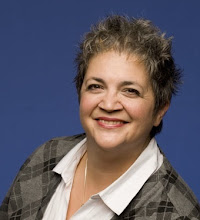When I was younger, I thought that my dream was a single dream I had all figured out. That my vision of my dream was the true, entire dream. But dreams, I’ve discovered, are fluid and changing. They evolve with your life. If you let them.
When I was seven I saw my first play. The world changed colours for me, and sitting there in the audience, I knew that this was what I wanted to do when I grew up. I went home and told my mother, who – sensing that this wasn’t just an idle wish in me – freaked. She found a clipping in the newspaper that said that actors earned about $6,000 a year and posted it on the fridge for me. Reading that, I thought, “Wow! $6,000! That’s so much money!” To a seven-year-old, it is.
Needless to say, we had differing opinions on my chosen career.
I persisted, in a back-and-forth kind of way. By the time I was an adult, I knew that my mom was right in that acting was not in any way a sensible career, especially since I wasn’t an ingénue (small, cute, skinny). I repeatedly gave up but was repeatedly drawn back by the persistence of my dream.
Persistence
When I was 28, I went back to acting for the last time. I was terrified: I knew that the likelihood of my success was almost nil. But the calling inside me was too strong. I thought, “Well, I’ll give it a shot, and then, when I die, at least I’ll know that I really tried. I won’t be tormented by ‘what if’s’. ”
I actually did better than I thought I would. I had about three gigs a year, which for an actor is a lot, but for someone trying to earn a living is not very much at all. Going to auditions – in case you don’t know – is a brutal way to earn a living. Eventually the pain of repeated rejection was so great that I wondered why I was doing this to myself. And I knew I had to stop, if I cared for myself at all.
And so my dream died.
A dream reborn
And out of the burnt, dessicated ashes of that dream, another dream emerged: the dream to write musicals.
When I started writing musicals, I was even more terrified than I was when I went back to acting at 28.
But this time I was terrified of the creative process inside me, not of dealing with the industry outside me.
If the pain of pursuing my acting dream had not been so great, I never would have been willing to face the fear of writing music.
Writing musicals led, in turn, to eventually producing musicals, and which eventually led to the full creative freedom and success that I am currently enjoying at DreamRider Theatre.
None of which would have happened if I hadn’t allowed my acting dream to die a horrible death.
When I turned forty, many actors my age that I knew were giving up and going into teaching and other sensible occupations. Others were refusing to give up their dreams; a few continued to work regularly (i.e. they were still doing the several gigs a year that is not enough for a living) while others just kept trying.
One old friend was a struggling actor ten years ago, trying to break in, and is still a struggling actor today, trying to break in. I cannot imagine the pain of such extended trying and trying and failing. Kudos for persistence, but it also reminds me of that adage, “insanity is trying the same thing and hoping for a different outcome.”
What does a dream need?
We hear those – “don’t let your dream die” and “persistence is the key” etc.
We don’t ever hear, “Sometimes letting your dream die is exactly what it needs.”
I believe, from my vantage point now, that that feeling of “my dream” and “my calling” is a pull from our higher selves in the direction we must go to fulfill our destiny in this life. But I also now believe that sometimes – or often – we need to keep our ears open to the possibility that we might have followed our path in this direction far enough, and it’s time for a left turn to something even better that we had not expected.
Sometimes we are so blind that the only way we’ll realize we missed the turn we were supposed to take, is through being “in pain about our dream” as I was. The gift of the death of a dream is that there is in fact always another to take its place. If you listen for it.
Or, said another way, my dream didn’t die, it just morphed into something unexpected.
 66% of students choose the class where they’ll be able to change their minds. As Gilbert says, 66% of the students choose the class in which they will be less happy.
66% of students choose the class where they’ll be able to change their minds. As Gilbert says, 66% of the students choose the class in which they will be less happy.














